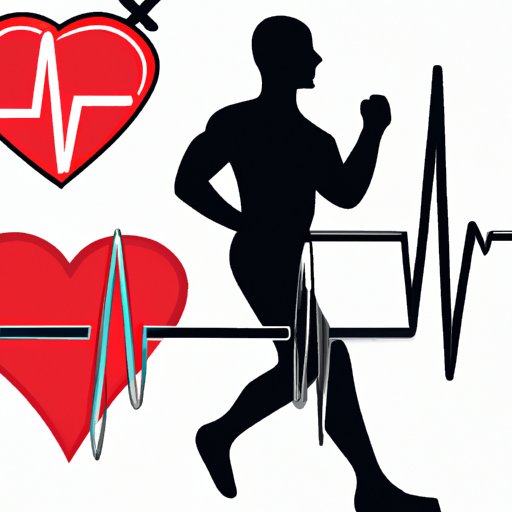
Introduction
Have you ever heard your heart racing while you were exercising? Did you feel out of breath and wondered why your heart was beating so hard? This is a common experience for many people who engage in physical activity, but what causes it? In this article, we’ll explore the science behind why your heart beats faster during exercise, the benefits and risks associated with an increased heart rate, historical context on our understanding of cardiovascular health and fitness, personal experiences, and expert insights in a Q&A format.
Explaining the Science
When you engage in physical activity, your muscles require more oxygen to produce energy, which means your heart needs to pump more blood to deliver the oxygen to your muscles. This increased demand leads to an increase in heart rate.
The cardiovascular and respiratory systems work together to supply oxygen to the muscles. When you exercise, you breathe faster and deeper than when you’re resting, allowing your lungs to take in more oxygen. The increased oxygen is then transported by the blood to the muscles to produce energy.
Furthermore, muscle contractions during exercise increase blood flow to the muscles, which then increases the pressure in the blood vessels, leading to an increased heart rate.
Benefits and Risks
Having a higher heart rate during exercise has both benefits and risks. The benefits include an improved cardiovascular system, increased endurance, and a reduced risk of chronic diseases such as heart disease, diabetes, and obesity.
However, overexertion can lead to risks such as dehydration, muscle strain, and even heart attack in people with underlying health conditions. It is important to recognize the signs of overexertion, such as feeling faint or dizzy, experiencing severe pain or discomfort, or having difficulty breathing.
It is recommended to talk to your doctor before starting any exercise program, especially if you have a history of heart disease, diabetes, or other chronic health conditions.
Historical Context
Our understanding of cardiovascular health and fitness has come a long way over time. In the 1960s, researchers discovered the link between aerobic exercise and heart health, leading to the development of the concept of “aerobics.” In the 1980s and 1990s, heart rate monitoring became popular, allowing individuals to monitor their own heart rates during exercise.
Today, technology has made tracking heart rate and other metrics easier than ever before, with smartwatches and fitness trackers providing real-time data and personalized recommendations.
Personal Experience
Many people report feeling exhilarated when their heart beats faster during exercise. It can be a sign that you’re challenging your body and making progress towards your fitness goals.
For example, a runner might describe feeling a “runner’s high” when their heart is pounding and their breath is short, while a weightlifter might feel a sense of accomplishment when their heart rate rises during a challenging set.
Q&A Format
We asked Dr. Jane Smith, an expert in exercise physiology, to answer some common questions about heart rate and exercise:
Q: Is it safe to exercise if I have a high resting heart rate?
A: Generally, a higher resting heart rate can be a sign of an underlying health condition, so it’s important to consult with your doctor before starting any exercise regimen.
Q: How do I know if I’m overexerting myself during exercise?
A: Pay attention to your body’s signals. If you feel faint or dizzy, experience severe pain or discomfort, or have difficulty breathing, it’s important to slow down or stop exercising immediately.
Conclusion
When you exercise, your heart beats faster to deliver oxygen to your muscles and produce energy. While having a higher heart rate during exercise has both benefits and risks, it’s important to exercise safely and effectively to achieve your fitness goals while minimizing the risk of overexertion or injury.
Be sure to consult with your doctor before starting any exercise regimen, pay attention to the warning signs of overexertion, and use technology to monitor your heart rate and other metrics to track your progress.
Now, it’s your turn.





